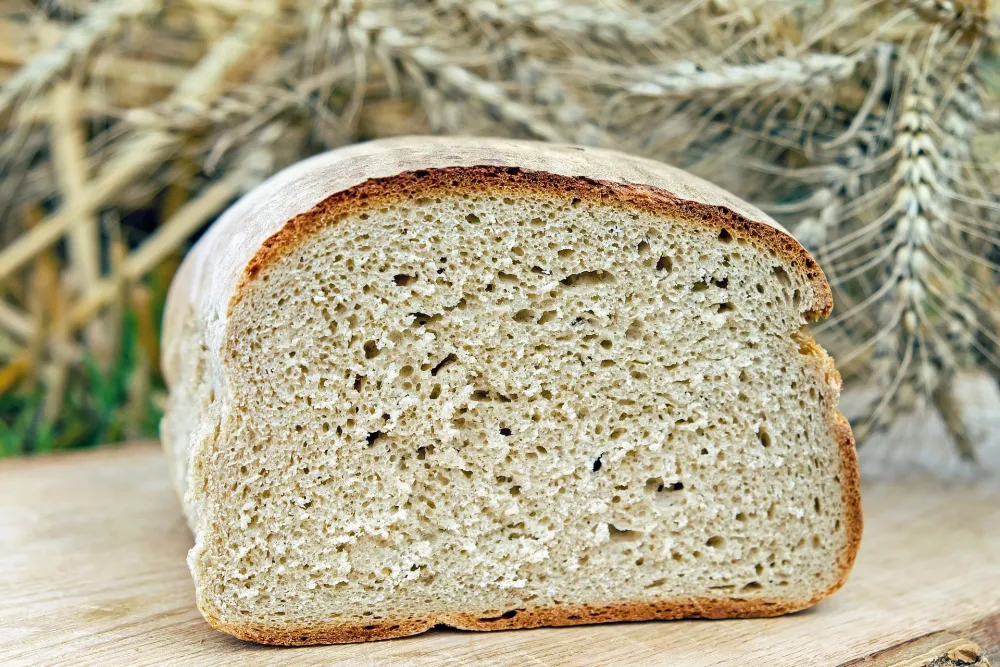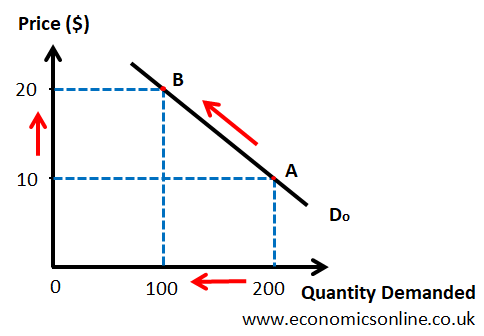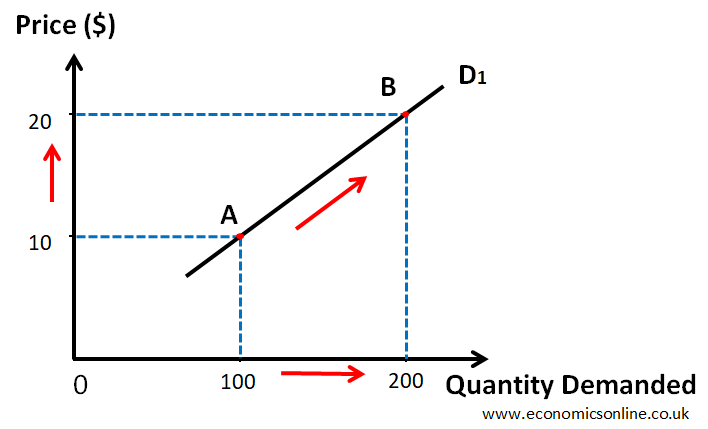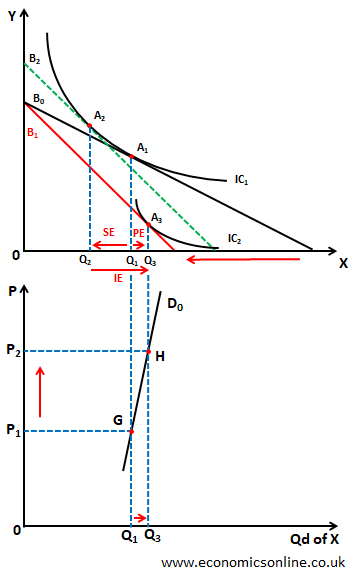
Image of bread as an example of a Giffen good.
Giffen Goods
Definition
A Giffen good is a good that people consume more of when its price rises, thus violating the law of demand.
The term 'Giffen Good' is named after Scottish journalist and statistician, Sir Robert Giffen, (1837–1910).
There are three conditions for Giffen goods:
- The good is an inferior good,
- There is a lack of close substitutes and even if there are some substitute goods, they are expensive.
- Significant portion of the buyer's income is spent on the good. Only in such a scenario,an increase in the price will create a significant income effect.
According to economists, all Giffen goods are inferior goods, but not all inferior goods are Giffen goods.
Giffen Good and the Law of Demand
The concept of a Giffen good is a fascinating and intriguing topic in economics and consumer theory. It is characterized by the paradoxical phenomenon where the demand for a good increases as its price rises, which goes against the traditional laws of demand.
We will use demand curves to explain the difference between normal goods and Giffen goods.
Normally, as the price of a good increases, consumers tend to opt for cheaper substitutes, causing a decrease in the demand for the original good.
This is shown by the following downward sloping demand curve.

The above downward sloping demand curve D0 shows the negative relationship between the price of a good and its quantity demanded, ceteris paribus.
At point A, 200 units of product are demanded by consumers at a price of $10. When the price is increased to $20, the quantity demanded decreases to 100 units.
However, in the case of Giffen goods, cheaper substitutes are not readily available, causing people to consume more of the original good even as its price increases.

The above upward sloping demand curve D1 is for Giffen goods and for such goods the curve shows a positive relationship between the price of a Giffen good and its quantity demanded, ceteris paribus.
At point A, 100 units of product are demanded by consumers at a price of $10. When the price is increased to $20, the quantity demanded increases to 200 units.
Giffen Good and Price Elasticity of Demand
To understand the concept of Giffen goods, it's important to note that the price elasticity of demand is usually negative, meaning that as the price of a good increases, its demand decreases, and vice versa. Giffen goods are an exception to this rule, as their price elasticity of demand is positive, meaning that as the price of the good increases, so does its demand. For a good to be considered a true Giffen good, its demand must change in response to changes in its price and nothing else.
Examples of Giffen Goods
One of the classic examples of a Giffen good is an inferior-quality staple food like wheat, which is consumed by individuals in poverty and constitutes a significant portion of their income. As the price of the cheap staple food increases, consumers can no longer afford to supplement their diets with better foodstuffs, leading to an increase in the demand for the staple food.
In his textbook 'Principles of Economics', economist Alfred Marshall described Robert Giffen’s work in the context of bread rising in price because people lacked the income to buy meat. The poor consumed more of the bread when its price rose—the Giffen behavior.
Let’s take another example of bread and lamb. If we consider an individual who spends all of their income (Y) on bread (B), a staple food that must be eaten each day, and with any income left over being spent on a more ‘luxury’ food item such as lamb (L). The currency used is the euro (€).
We shall also assume a weekly income, Y, of €200. Bread is cheap, and priced at €4, and lamb which is much more expensive is priced at €60 per unit.
Weekly spending on these two items is:
5 units of bread a day – the minimum level for survival, making 35 units bought per week, costing €140; and the remainder, €60, is spent on one unit of the luxury good, lamb, consumed on one day a week.
So the income of €200 is allocated as (€4 x 5 x 7) = €140 to bread, and (1 x €60) = €60 for lamb.
If, now, the price of bread increases from €4 to €5, then the only way to continue to consume the necessary quantity of the staple food, bread, (5 units) is to stop purchasing lamb. Hence, weekly spending now on lamb is 0, leaving €200 available to spend on bread.
This means that at the higher price of €5 for bread, 40 units of bread can be purchased (an increase from 35 units).
Finding Giffen goods is challenging as a number of conditions must be met, and the concept was originally envisioned in the context of poverty-stricken individuals.
Other proposed examples, such as kerosene and gasoline, lack sufficient evidence to support their classification as Giffen goods.
Significance of Giffen Goods
Giffen goods are an important topic in microeconomics because they challenge the basic laws of demand and provide insight into the behavior of consumers in lower-income households. Understanding Giffen goods is essential in designing policies aimed at improving the well-being of lower-income households.
Giffen Goods and the Consumer Behavior
Giffen goods provide insight into the behavior of lower-income households and their consumption patterns. Understanding the behavior of lower-income households is critical in designing policies aimed at improving their well-being and reducing poverty.
Giffen Goods challenge Conventional Economic Theory
Giffen goods challenge conventional economic theory, which states that as the price of a good increases, the quantity demanded decreases. This challenge highlights the need for a more nuanced understanding of consumer behavior and the role that income and other factors play in shaping demand.
Giffen Goods and Indifference Curve Analysis
Consider the following diagram.

Here we assume that X is a Giffen good and its price is increased.
B0 shows the initial budget line. When the price of good X is increased, there is a pivotal inward shift of the budget line from B0 to B1. In order to show substitution effect according to Slutsky approach, we draw Budget Line B2 parrallel to B1. Indifference Curve IC1 is touching points A1 and A2, and IC2 is touching point A3.
The price effect is Q1Q3 is shown by the movement of point A1 to point A3, as shown in the diagram. Substitution Effect (SE) is Q1Q2 as shown by movement along IC1 from point A1 to A2. Income Effect (IE) is Q2Q3, which is shown by the shift of consumers from point A2 at IC1 to point A3 at a higher Indifference Curve, which is IC2.
All equilibrium points A1, A2, and A3 are where budget lines are tangent to ICs. The income effect is stronger than the substitution effect, and both work in opposite directions. Due to this, the demand curve is upward sloping.
Conclusion
In conclusion, Giffen goods are a rare type of good that defy the laws of demand and violate the basic principle of economics that states that as the price of a good increases, the quantity demanded decreases. Giffen goods are characterized by their unusual price elasticity of demand, serving as both a normal good and an inferior good, and the significance of Giffen goods in economic analysis lies in their ability to provide insight into the behavior of lower-income households, the relationship between price and income elasticity of demand, and the need for a more nuanced understanding of consumer behavior.
While Giffen goods are rare, their existence highlights the complexity of consumer behavior and the importance of considering a range of factors, including income, in analyzing demand. In practical terms, the study of Giffen goods can inform policies aimed at reducing poverty and improving the well-being of lower-income households. Overall, Giffen goods remain a fascinating and important topic in microeconomics, challenging conventional economic theory and providing valuable insights into consumer behavior and the economy as a whole.


